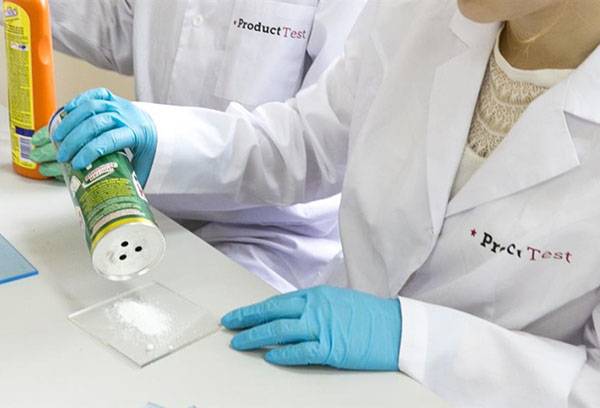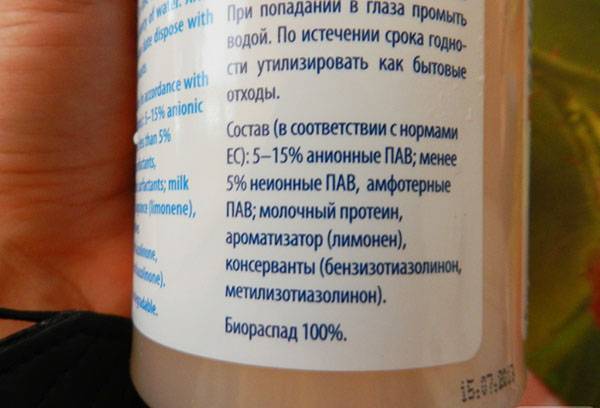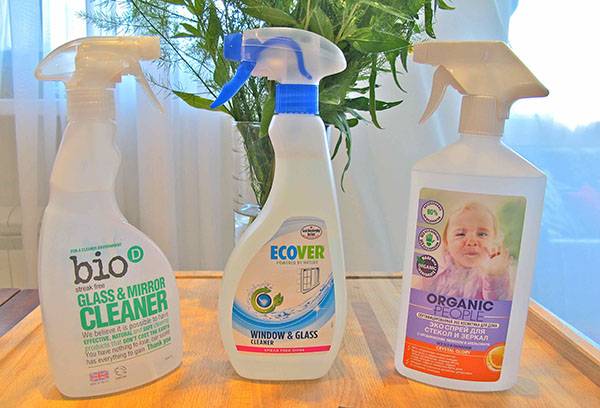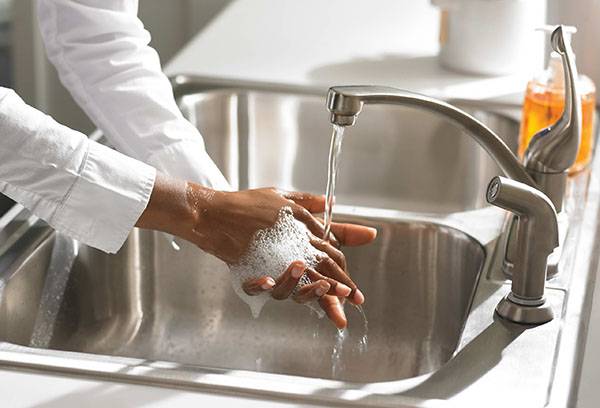What cleaning products are safe to use in the kitchen?
The choice of cleaning products for the kitchen must be approached carefully and consciously. Especially if we are talking about a product that comes into contact with dishes. Scientists have found that every year a person eats up to 0.5 kg of household chemicals. It is important that the gel or powder copes well with its intended purpose and is also safe for health. This is especially necessary if there is a small child in the house.
Before the advent of modern specialized means, people practiced more primitive methods. Nettle, mustard and even sand were used to wash dishes. With the advent of the first representatives of modern household chemicals, housewives en masse switched to using them, never tired of praising the thick foam and pleasant aroma.
However, over time, changes have occurred in the minds of housewives. Many people have wondered: aren’t chemical components harmful? How to make cleaning safer? Despite the variety of household products intended for use in the kitchen, some women switch to “grandmother’s” cleaning methods. Knowing everything about modern household chemicals, it is not at all necessary to do this.
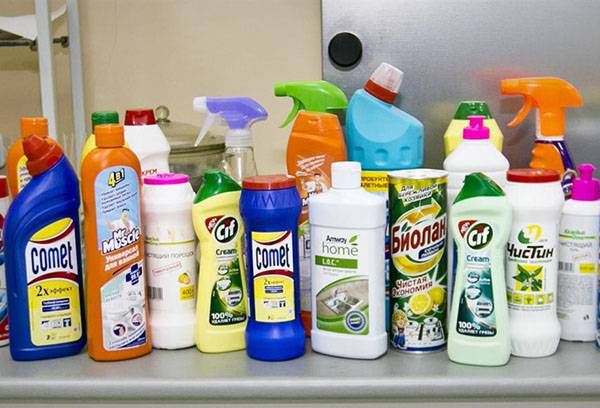
Variety of kitchen cleaning products
When it comes to household chemicals for the kitchen, the first thing that comes to mind is dishwashing detergent. However, this is far from the only representative of household chemicals that help make cleaning in the kitchen easier. In addition to this, this category includes:
- stove cleaning gel;
- floor cleaning liquid or gel;
- aggressive agents against scale and rust;
- microwave or oven spray.
All types of household chemicals differ in their degree of aggressiveness. The most “harsh” are powders and gels for removing rust from kitchen plumbing. In second place are powders for removing plaque and carbon deposits that remain inside microwave ovens or ovens. Rounding out the top three aggressive agents are descaling powders, which help restore pots and kettles to their former shine.
Release form
Depending on the purpose, each product has a specific release form.
- Powder. In the kitchen, powders are used to clean the surfaces of sinks, tables, tiles or dishes. This is one of the most popular forms of household chemicals. The use of powders to wash the glossy surface of a gas or electric stove is strictly prohibited. Abrasive particles can leave very noticeable scratches. Also, “grains of sand” get stuck in cracks on dishes and then enter the body along with food.
- Gel. The second most popular form of release. In the form of a gel, a detergent is produced for washing dishes, gas stoves, tiles, plumbing fixtures and other surfaces. There are two types of gel: with abrasive and without abrasive. The first type is not suitable for removing dirt from shiny surfaces such as taps and gas stoves. Abrasive particles may leave small scratches, which will lead to damage to the coating.
- Spray. Anti-rust and anti-grease products are available in the form of sprays. The first type is applied to plumbing elements and then washed off with cold water. Rust disappears literally before our eyes. The second type is designed to remove grease splashes from the internal surfaces of the oven or microwave oven.
Advice
The use of aggressive agents without rubber gloves is strictly prohibited.
- Liquids. By “liquid” we mean products whose consistency is no thicker than water. For cleaning in the kitchen, they are used only for washing the floor (tile or laminate). As a rule, they are produced in the form of concentrates. Used in diluted form (1 cap of concentrate per 5 liters of water).
Compound
The greatest concern is the composition of all products on the household chemicals market. Manufacturers strongly recommend wearing gloves and avoiding contact of the substance with skin. What are kitchen cleaning products made from and how safe are they to use?
Almost any household chemical contains components that contribute to:
- corrosion of fat (surfactants, betaine, alkali, mineral salt, sodium laureth sulfate, citric acid, etc.);
- skin care (aloe extract, glycerin, pH regulator, etc.);
- maintaining a viscous consistency (thickeners, cocamide DEA, sodium chloride);
- destruction of fungi and bacteria (formaldehyde and other antibacterial substances);
- imparting a pleasant aroma (flavors, fragrances, natural plant extracts, perfume compositions);
- adding color (natural or chemical dyes);
- foaming (sodium laureth sulfate and stabilizers);
- long-term storage (preservatives).
The composition of the average chemical detergent is described here. Unfortunately, the list of natural ingredients is very meager, which makes us think about the safety of the product. However, they have been replaced by environmentally friendly products that boast the absence of surfactants and phosphates in their composition and a richer arsenal of natural ingredients.Amway and many other manufacturers can offer such products.
Green cleaning
If you are seriously concerned about your health and the environment, you should switch to harmless ways to keep your home clean. This can be done by purchasing environmentally friendly cleaning products or by completely avoiding store-bought products. Everything you need for cleaning can be found at home.
You can use baking soda to remove a layer of old grease in the oven. Spray water on the walls and “ceiling” of the oven, sprinkle the wet surfaces with baking soda and spray a little water again. The oven should remain in this condition overnight. The next morning, all dirt will be removed using a regular rag.
You can get rid of scale using citric acid, lemon juice or vinegar. Acid does an excellent job of corroding fat, soot, plaque and other contaminants. Can be used for stainless steel cookware. Baking soda works great against scale. It is enough to boil the soda solution in the damaged kettle for about half an hour.
Homemade dish detergent recipe
To be sure of the safety of the product and not spend large sums on its purchase, it is better to take the issue more seriously and prepare a homemade product. To do this you will need:
- bar of baby soap;
- water;
- mustard;
- Castor oil;
- coffee grounds.
Grate the soap and add a little water to the shavings. Place the container in a water bath and melt the soap to the consistency of honey, gradually adding water. The resulting foam must be removed. Then add one tablespoon each of mustard and castor oil and 2 tablespoons of coffee grounds.For aroma, you can add a few drops of your favorite citrus oil, and for antibacterial properties - 1 tbsp. alcohol solution of calendula.
Any conscientious housewife should take good care of the condition of her own kitchen. However, maintaining sterile cleanliness does not have to endanger your family or the environment.
